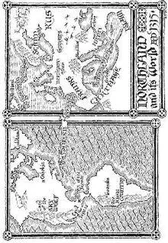The situation is similar at Polyphemus, whose magnetosphere envelops six of its moons, including Pandora. The interaction of Polyphemus’ magnetosphere with Pandora’s is complicated and interesting. The localised magnetic “hot spots” on Pandora’s surface funnel charged particles from Polyphemus’ magnetosphere or from the sun down to the surface. The result is storms from space similar to those on Earth caused by solar flares, violent releases of energetic particles from magnetically active regions on the sun’s surface. On Earth, extreme events can crash power lines, interfere with communications between planes and ground controllers, and affect mobile phone services.
But our own magnetosphere is basically a shield. It generally deflects the worst of the solar storms, pushing aside the charged particle flows. Pandora’s complex magnetosphere actually delivers the storms to the surface. An intense enough storm could be lethal for life forms; in the very worst case death could come instantly as the brain’s tissue is ionised, and you just “short out.”
Another remarkable feature Pandora shares with Io is a flux tube. Io is connected to its parent Jupiter by a tremendous trail of plasma, a natural conductor that carries a current of five million amps across a potential difference of hundreds of thousands of volts, with a power seventy times more than all of Earth’s generating capacity. This astounding structure pours additional heat energy down onto Io’s roiling surface. Pandora’s flux tube is more intermittent, but when it works it creates massive electrical storms, auroras, and other phenomena.
Quaritch is right. Pandora is a very hazardous world.
But RDA is on Pandora despite the hazards. The wealth to be found under Pandora’s surface makes it worth braving the hazards. And RDA is very efficient at extracting that wealth.
PART FIVE

HELL’S GATE
“This is why we’re here. Unobtanium. Because this little grey rock sells for twenty million a kilo. No other reason.”
—Parker Selfridge
Among Avatar ’s many striking images are aerial views of RDA’s great unobtanium mine on Pandora. It looks like a lunar landscape cut out of the green, across which giant machines crawl. The sheer scale of all this is brought home to us in Jake’s first scenes on Pandora, when, fresh off the Valkyrie shuttle from orbit, he is tiny beside dump trucks, their wheels taller than a standing human—but in other shots we see how the trucks themselves are dwarfed beside the tremendous excavators in the pit.
The size of an RDA excavator, a DD40 Heavy Duty Class Wheel Loader, is staggering. You could fit seventeen soccer pitches on its mighty back. At five hundred metres long, it is over a hundred metres longer than the largest ships currently operating on Earth’s oceans (Maersk E-class container vessels). And it’s over three hundred metres high: there are only about fifty taller skyscrapers in the world today. An excavator is a single machine the size of a city block.
There is something awesome in the sight of huge, single-purpose engines like these. As a boy in the 1960s I was struck by the futuristic machines in Gerry Anderson’s Thunderbirds , such as the Crablogger in the episode “Path of Destruction,” which crashes through the jungle pulling out trees with its gigantic claws like a child pulling up blades of grass. Even today I can’t help but be awed when I glimpse the machines that clear-cut the big managed pine forests close to my home in northern England. A “harvester” will fell a tree with its chainsaw, rollers force the tree stem between “delimbing knives” that strip the trunk of its branches, and logs are cut to a specified length. A huge twenty-year-old tree can be processed in minutes. Later a “forwarder” picks up the logs to carry them to great heaps by the roadside for collection. There are humans in the cabs of these machines, but not a lumberjack’s foot touches the ground. It’s not quite the gigantic slash-cutter we see in Avatar , but the principle isn’t far away.
The unobtanium mines on Pandora resemble open-cast mining operations here on Earth—and especially the huge operations now underway around the world to extract oil sands.
Oil sands (also known as tar sands) are a kind of bitumen deposit. Bitumen is a dense and sticky form of petroleum that can collect in layers of sand or clay and water. Such deposits occur around the world, and in fact were exploited in ancient times in the Middle East for the water-proofing of reed boats, and creating Egyptian mummies. The world’s largest deposits are in Canada and Venezuela, each of which is said to have reserves equivalent to the world’s total reserves of crude oil. (Maybe this is why Jake Sully was sent to fight in Venezuela.) The Athabasca Oil Sands, in Alberta, Canada, have been the scene of the commercial extraction of bitumen since 1967. The Athabasca operation employs what are said to be the biggest power shovels and dump trucks in the world. The oil sands themselves are typically in a layer fifty or so metres deep, sitting on top of limestone strata. To mine them you have to clear the land of trees and brush, then remove what the miners call the “overburden,” the topsoil and layers of peat, sand and gravel, and then the extraction is done. This is roughly the technique used in the Pandoran unobtanium mines.
The modern extraction process, which requires huge amounts of energy for steam injection and refining, was until recently considered uneconomical—but that’s changed through a combination of better technology and rising oil prices. Production in Canada has grown to the extent that the country has become the largest contributor of oil and refined products to the United States. Environmental issues are regularly raised. State and national governments apply strict rules; for instance all such projects are required to implement a land reclamation plan. But environmentalists object that oil sands extraction processes generate more greenhouse gases per barrel than the production of conventional oil.
Meanwhile, at the time of writing there are plans to open up a huge iron ore mine in Arctic Canada, far to the north of any operation of a similar scale previously—an opportunity provided, ironically, by the global-warming retreat of the polar ice. Just as on Pandora, there is native fauna to be moved out of the way, including caribou, Arctic foxes and polar bears, and local people to deal with in the Inuit.
I suppose that if the world suffers the ecocide we looked at in Chapter 2we can expect such operations to proliferate. Nobody would care about the impact on the environment, because there would be no environment to save, any more than on the lifeless moon. Certainly satellite views of the operations in Athabasca and elsewhere are starkly reminiscent of Avatar ’s scenes of unobtanium mining on Pandora.
The principal unobtanium mine, humanity’s most distant industrial operation, is known as RDA ESM 01—RDA Extra-Solar Mine 01. Operators in sealed cockpits use chemical charges to break up the overburden, which is then removed with excavators, dozers and dump trucks. The unobtanium ore is removed with excavators and trucks, but a pure enough deposit can spontaneously levitate, requiring specialised belt diggers to feed into covered trucks. Over the thirty years of its expected lifetime the three pits of ESM 01 will eventually merge into a crater four kilometres across. But RDA is already looking at further deposits to develop.
All this is very plausible. Today we’re pretty competent at mining the Earth. And we are already working out how to mine other worlds.
Читать дальше











